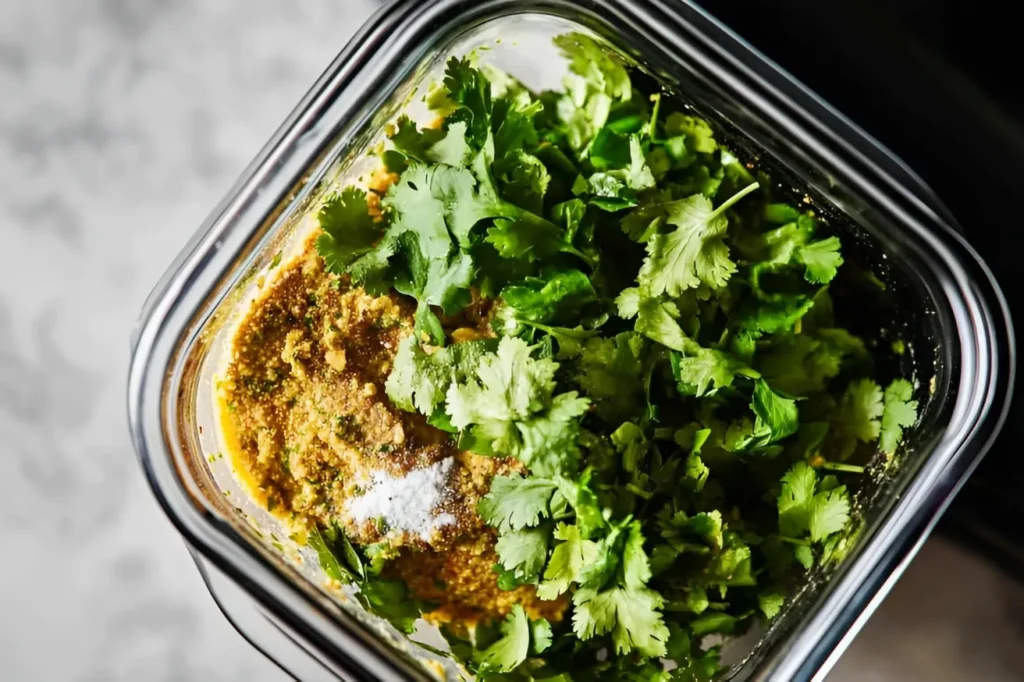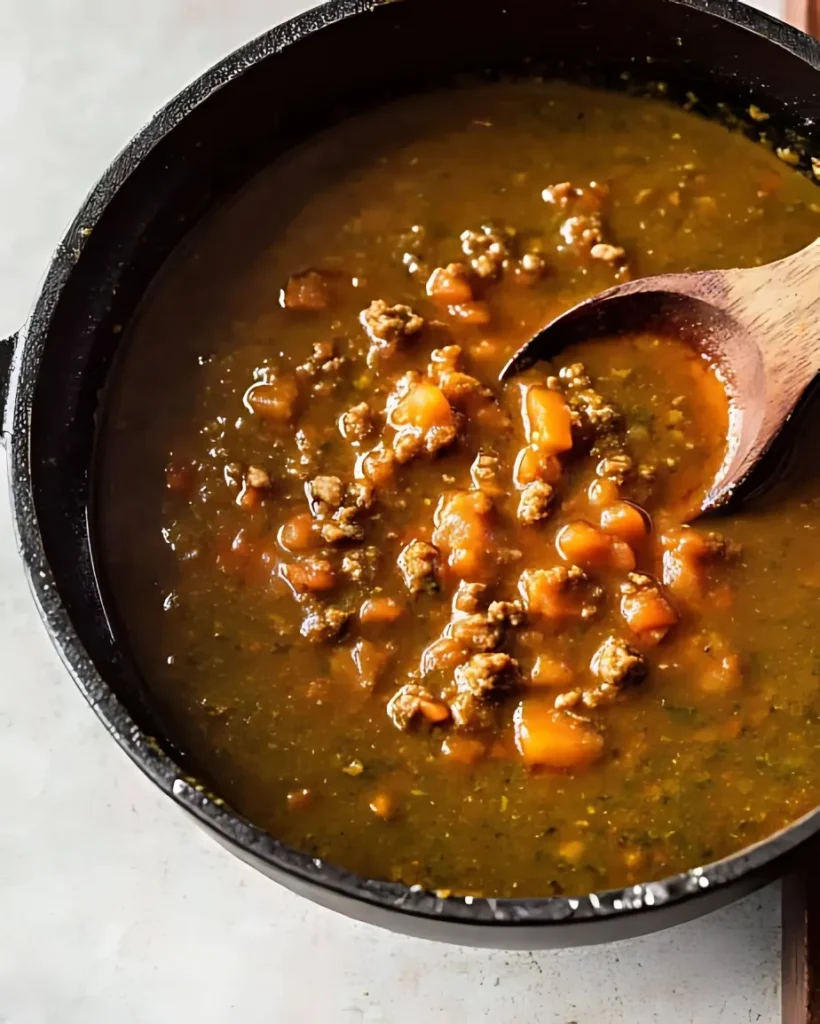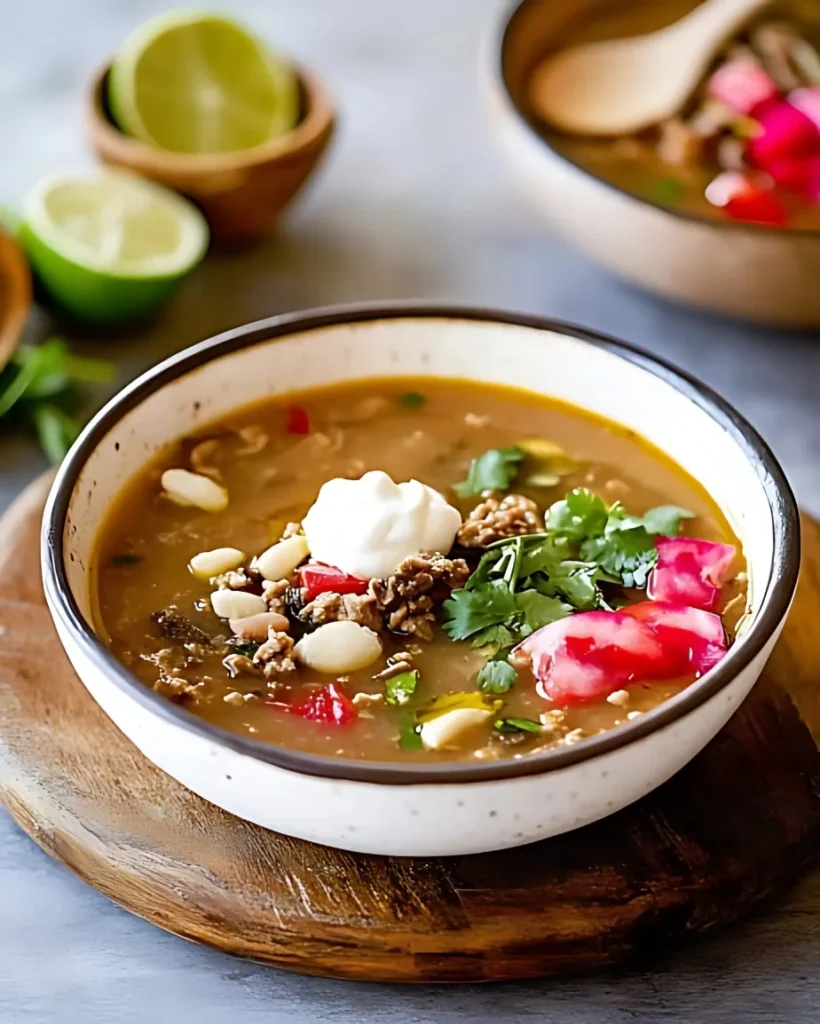Imagine a lively kitchen in Guadalajara, filled with the smell of sizzling beef and crispy bacon. This is where Carne en su Jugo, a warm Mexican beef soup, stole my heart. The broth’s rich flavor tells tales of family and cooking traditions passed down through generations.
As someone who loves food, I found that Carne en su Jugo is more than a meal. It’s a cultural journey. This authentic Mexican beef soup combines tender beef, smoky bacon, and hearty beans. Together, they create a dish that warms your body and soul.
Start your culinary adventure here, diving into a recipe that turns simple ingredients into a feast. Whether you’re an experienced cook or just starting out, this journey into traditional Mexican cooking will excite and inspire you.
Key Takeaways
- Carne en su Jugo is a traditional Mexican beef soup with deep cultural roots
- The dish originated in Jalisco and represents authentic Mexican cuisine
- Simple ingredients create a complex and deeply satisfying flavor profile
- Perfect for family gatherings and comfort food enthusiasts
- Combines tender beef, bacon, and beans in a rich, savory broth
What is Carne en su Jugo: Origins and Tradition
Explore the rich history of Carne en su Jugo, a favorite dish in Jalisco cuisine. It’s a story of family, taste, and generations of cooking passion.
The roots of Carne en su Jugo are in Jalisco, Mexico. It started as a hearty meal that shows the area’s farming and cooking skills. Families in Guadalajara have made this recipe their own, turning simple ingredients into a memorable meal.
The Jalisco Culinary Landscape
Mexican food history shows Carne en su Jugo’s importance. It’s more than a meal; it’s a tradition that brings people together. The dish is known for:
- Tender beef cuts
- Flavorful green broth
- Fresh local ingredients
Cultural Significance in Family Recipes
In Mexican homes, family recipes like Carne en su Jugo are precious. They are passed down, showing love, community, and cooking art. Each family adds its own twist, making the recipe a living part of their heritage.
Gathering Around the Table
Weekends and special times are for family, with Carne en su Jugo at the center. The smell of cooking beef and herbs makes everyone feel welcome. It’s a tradition that has lasted for many years.
Essential Ingredients for Perfect Carne en su Jugo

To make a true Carne en su Jugo, you need the right ingredients. They add depth and traditional flavor to this classic Mexican dish. Start with high-quality beef cuts for tender, juicy meat.
For the best beef, choose:
- Sirloin (thinly sliced)
- Flank steak
- Skirt steak
Bacon is key for the soup’s rich, smoky taste. Pick thick-cut, high-quality bacon. It melts into the broth, adding deep flavor.
The green broth’s flavor comes from fresh tomatillos and cilantro. These give the soup its bright, tangy taste. Choose firm, bright green tomatillos with tight husks for the best flavor.
Pinto beans add protein and texture. Here’s how to prepare them:
- Soak dried beans overnight for better texture
- Rinse canned beans thoroughly if using pre-cooked
- Season beans with subtle spices to enhance their natural flavor
By carefully choosing and preparing each ingredient, you’ll make a Carne en su Jugo that truly captures Jalisco’s culinary tradition.
Step-by-Step Cooking Instructions
Preparing Carne en su Jugo needs careful beef preparation and slow cooking. Start by picking the right ingredients. Then, use traditional techniques to bring out the dish’s rich flavors.


Preparing the Beef
Choose a high-quality beef cut, like flank steak or sirloin. Slice it thinly against the grain. Season with salt and pepper, making sure each piece is coated well. Professional chefs say to let the beef sit for 15-20 minutes to soak up the seasonings.
Creating the Signature Green Broth
The green broth is the heart of Carne en su Jugo. You’ll need:
- Tomatillos
- Fresh cilantro
- Serrano peppers
- Garlic
- Onion
Blend these ingredients until smooth. This vibrant green sauce adds authentic Mexican flavors to your dish.
Cooking Time and Techniques
Slow cooking makes the meat tender and flavorful. Use a heavy pot or Dutch oven to simmer the beef in the green broth. Cook on low heat for 1-2 hours, until the meat is tender. Patience is key in achieving the perfect texture.
Keep an eye on the liquid levels and add water if needed to prevent burning. Aim for a rich, concentrated broth that clings to the meat. This will give you an explosion of flavor in every bite.
Serving Suggestions and Garnishes
Make your Carne en su Jugo dish stand out with traditional Mexican garnishes. These add-ons can greatly improve the taste and look of your meal.
Begin by preparing a variety of garnishes that will make your Carne en su Jugo truly authentic. Here are the essential Mexican garnishes to consider:
- Crisp radishes, thinly sliced for a peppery crunch
- Fresh lime wedges for a bright, citrusy accent
- Warm tortillas for scooping up the rich broth
- Chopped fresh cilantro
- Diced white onions
- Sliced avocado
Let diners customize their bowls for an exceptional serving. Place garnishes in small dishes around the table. This way, everyone can mix and match to their liking. Squeeze lime wedges into the broth for extra flavor, or use tortillas to soak up the juices.
When serving Carne en su Jugo, presentation is key. Arrange radishes and garnishes artfully around the bowl. This creates a colorful and inviting display. Your guests will love the chance to make their meal their own with these traditional Mexican accompaniments.
Tips for Authentic Flavor and Common Variations
Mastering Carne en su Jugo means diving into the rich world of Mexican cuisine. Each region adds its own special touch to this dish. This creates a colorful mix of culinary traditions that make it unique.


Regional Differences in Preparation
Different parts of Mexico have their own ways of making Carne en su Jugo. In Jalisco, the dish is known for:
- Tomatillo-based green sauce
- Pinto beans as a main ingredient
- Slow-cooked beef with strong seasonings
Modern Culinary Adaptations
Today, chefs are trying new things with Carne en su Jugo. They use different proteins and cooking methods. This makes the dish appealing to more people.
- Vegetarian options with plant-based proteins
- Low-fat versions
- Instant pot and slow cooker recipes
Troubleshooting Kitchen Challenges
While making Carne en su Jugo, you might face some issues. Here are tips to help you avoid these problems:
- Choose the right cut of meat to avoid toughness
- Keep the liquid at the right consistency
- Adjust the spices carefully
By understanding these regional Mexican cuisine tips, you can make your Carne en su Jugo truly special.
Health Benefits and Nutritional Information
Carne en su Jugo is a standout in the Mexican diet, packed with protein. It’s a traditional dish that’s both balanced and healthy. The mix of lean beef and beans gives you high-quality protein, which is great for muscle strength and body function.
This dish is more than just protein. Carne en su Jugo is full of essential nutrients. It has lean beef, beans, tomatillos, and fresh garnishes, all working together to nourish you.
- Lean beef providing complete protein
- Beans offering fiber and additional protein
- Tomatillos packed with vitamin C
- Fresh garnishes contributing vital micronutrients
To make this dish even healthier, choose wisely. Use grass-fed beef for more omega-3s or add extra veggies. A serving has about 250-300 calories, which is good for those watching their diet.
For those watching their health, Carne en su Jugo is a great choice. It’s full of protein, veggies, and traditional flavors. You can adjust the recipe to fit your nutritional needs while keeping the authentic Mexican taste.
Conclusion

Exploring Carne en su Jugo is more than just eating—it’s a dive into Mexican culture. This dish is at the heart of family meals and cooking skills. When you make it, you keep alive a piece of food history passed down through ages.
The charm of Carne en su Jugo is in its simple yet rich taste. It’s perfect for both experienced cooks and those new to cooking. Each bite is a taste of Jalisco’s food culture, bringing warmth and passion to your table.
When you try the recipe, remember it’s your own art. Feel free to add your touch while keeping its essence. Share it with loved ones, and watch as it brings people together and creates lasting memories.
Enjoying dishes like Carne en su Jugo helps us value the diversity of food worldwide. It’s not just a meal—it’s a celebration of tradition, taste, and the joy of sharing food.
FAQ
What exactly is Carne en su Jugo?
Carne en su Jugo is a traditional Mexican beef soup from Jalisco. It has tender beef cooked in its own broth. The broth is flavored with bacon, tomatillos, and pinto beans. This dish is known for its rich meat and green broth.
Is Carne en su Jugo difficult to prepare at home?
Making Carne en su Jugo at home is not hard. You just need the right ingredients and follow some steps. It’s all about preparing the beef and making the green broth right.
What cuts of beef work best for this recipe?
Sirloin or flank steak are the best for Carne en su Jugo. They stay tender and juicy while cooking. Make sure to trim fat and cut the meat into small pieces for the best taste.
Can vegetarians enjoy a version of Carne en su Jugo?
Yes, vegetarians can enjoy a version of Carne en su Jugo. Use seitan, jackfruit, or mushrooms instead of beef. The green broth and other ingredients stay the same, offering similar flavors.
How long does Carne en su Jugo typically take to prepare?
Preparing Carne en su Jugo takes about 60 to 90 minutes. This includes getting ingredients ready, making the broth, cooking the meat, and letting the flavors mix. Slow cooking is key to its rich flavor.
What are traditional garnishes for Carne en su Jugo?
Traditional garnishes include radishes, cilantro, lime wedges, onions, and avocado. These add freshness and flavor. Warm corn tortillas are also served with it.
Are there regional variations of this dish?
Yes, different parts of Mexico have their own Carne en su Jugo. While Jalisco’s version is the most traditional, other areas might change spice levels or use local ingredients.
Is Carne en su Jugo a nutritious meal?
Yes, it is. It’s full of protein from beef and beans, vitamins from tomatillos and garnishes, and has iron, protein, and fiber. It’s a healthy and filling meal.
What makes the broth in Carne en su Jugo unique?
The green broth is special. It’s made with tomatillos, cilantro, onions, and chili peppers. This mix gives the soup a tangy, herbaceous flavor that’s refreshing and complex.
Can Carne en su Jugo be stored and reheated?
Yes, it can be stored in the fridge for 3-4 days in an airtight container. Reheat it gently to keep the meat tender and the broth flavorful. Some say the flavors get even better after a day in the fridge.


2 thoughts on “Carne en su Jugo”